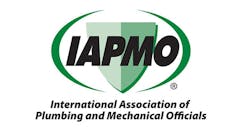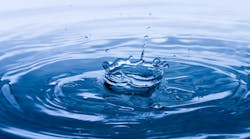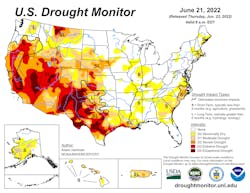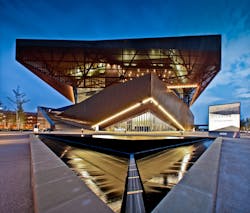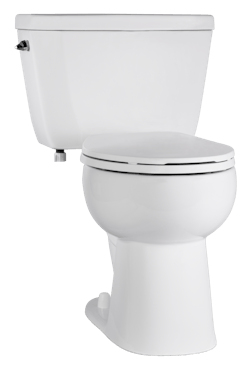Latest from Codes
Sponsored
By Mike Campbell, Business Development Manager at Niagara
In the last decade, countless reports and articles have covered the impending water crisis. These documents warn that the water crisis will be a major problem soon, but “soon” always seems like a far way off.
Sadly, the crisis has arrived and we’re already feeling the effects of droughts and water shortages. The Natural Resources Defense Council suggests that 70% of all U.S. counties may face more serious water shortages in the next 30 years, and at least 40 state water managers noted that they expect some water shortages in the next decade.
We simply cannot ignore the continuing depletion of the Earth’s most precious resource. We in the plumbing and construction industry have a duty to clients and future generations to conserve water.
Unfortunately, some of this freshwater is used for toilet flushing. We use water in ways we don’t even think about or consider every day. It’s past time that we bring water and water usage in the built environment to the top of mind in our daily lives and activities.
Some facilities, such as the Irving Texas Convention Center at Las Colinas (www.irvingconventioncenter.com/about/leed-certification), use water from nearby lakes through a water treatment system, but not all buildings can use a similar design either because of their location or their original design. Most of the time, inefficient, low-flow products with traditional technologies are often overlooked due to the stigma of poor performance and low quality of user experience.
Originally debuting in the 1990s, low-flow toilets were notorious for requiring multiple flushes to clear the bowl of waste, clogging and general low-performance issues. Thankfully, we’ve had more than 30 years to be innovative, and the high-efficiency, low-flow products on the market today—using half as much water—have been redesigned with high-performance technology and can match or outperform their counterparts.
It’s not about how much water is used, it’s how the water is used, and the innovative efficiencies that evolved through testing and design.
‘Building Beyond Code’
In addition to worrying about conserving water, professionals in the plumbing space must be concerned about staying up to code. This is why Niagara Conservation Corp. developed its newest continuing education course, “The Benefits of Implementing Water Conservation Standards by Building Beyond Code” (https://bit.ly/39TJeAC). It can be taken online through AECDaily.com or in person with one of Niagara’s instructors.
This informative CE course helps professionals become experts in current global water usage and standards, water efficiency requirements in building codes and standards, voluntary green building rating systems, how to upgrade specifications for efficiency, and how to specify products beyond code regulations.
Niagara’s goal in creating this course is to aid professionals in pointing to real-world proof—through various case studies provided during the session—when speaking to clients or peers who need more education around choosing sustainable products.
This course teaches how to significantly reduce water consumption and costs by using ultra-high-efficiency toilets, capitalize on green building benefits by lowering water consumption, and inform developers on financial incentives related to water conservation for affordable housing programs. It also reviews how to optimize the benefits available from exceeding current code and standard water consumption requirements.
Those who complete the course will be able to choose water-efficient products with confidence and impress clients with their suggestions.
Financial Benefits
The need for such a course is imperative due to the new infrastructure legislation, which funded green building programs, and for those who work directly with homeowners as rebate programs can help reduce the price on their sustainable choices. Pricing can be one of the primary reasons a homeowner or developer may choose to go with a more traditional product that, in many cases, can be an inefficient option using much more water.
However, it’s important to take all the financial benefits that come from using water-conserving products into account—such as lower water bills, utility rebate programs and LEED points. The cost of ownership and installation of ultra-high-efficient toilets has been proven to be significantly impactful when considering the return on the initial investment and the financial savings from the resulting water and sewage savings.
Bluefield Research’s 2021 U.S. Municipal Water & Wastewater Utility Rate Index indicated that a typical household’s combined water and wastewater bill has increased by 43.2% since 2012 (https://bit.ly/3QRFuQD). Water and sewer rates alone can be a significant part of a property’s utility bills, and there have been case studies as recent as 2021 (https://bit.ly/3OEwTyQ) proving the installation of products that use as little as 0.8 gallons per flush can save properties, especially multifamily properties, thousands of dollars on utility bills.
The key is to use products that include the EPA’s WaterSense, MaP or, even better, MaP Premium certifications. These certifications, combined with the right flushing technology such as a vacuum-assisted flush, can guarantee superior performance in drainline carry, little-to-no clogging and customer satisfaction.
For those concerned with using an ultra-high-efficient, low-flow product because of drainline carry, don’t forget that each product does not act on its own to push waste to the sewer line. In the example of a toilet using as little as 0.8 GPF, the water being flushed to clear the bowl and push waste through the trapway only needs to get the waste to the downline. At that point, other activities at the property such as washing hands, taking a shower or even running the dishwasher will all culminate in pushing collective waste down to the sewer.
So, while using a higher GPF toilet could get the job done, it’s unnecessarily wasteful. Using newer technologies such as a vacuum-assisted flush that forcefully pulls the waste and water through the trapway, into the drainline and then finishes with a powerful water push creates superior drainline carry, which has helped mitigate those concerns about how much water is being used.
Remember, it’s the flushing technology and design that creates efficiency, not how much water is being used.
Take the time to educate yourself on products that are more efficient than what local code dictates, can provide environmental and financial savings, and which environmental factors will impact building and design trends moving forward.
Mike Campbell serves as the business development manager-east for Niagara. With more than 20 years in the construction industry, he is an expert on property ownership and disposition, as well as single and multifamily construction. Mike is a passionate conservationist who is dedicated to conserving the world’s resources and providing a better, healthier living experience for all.

